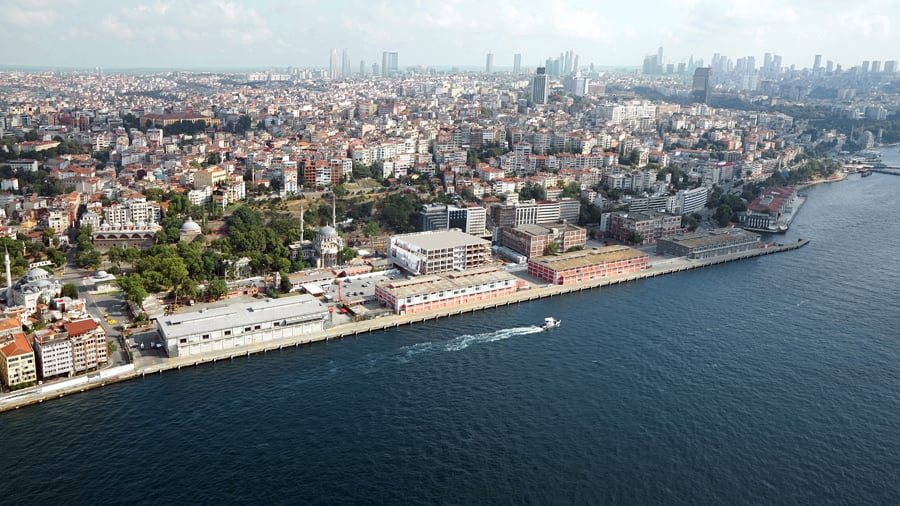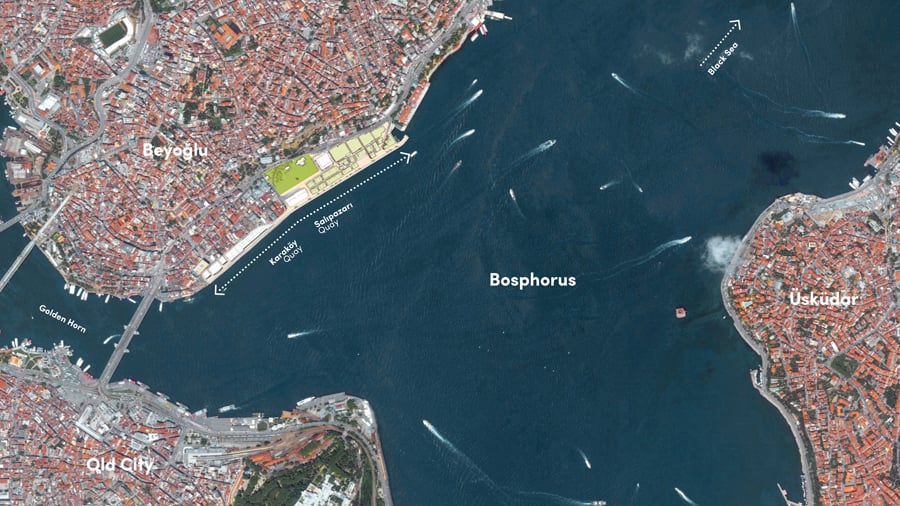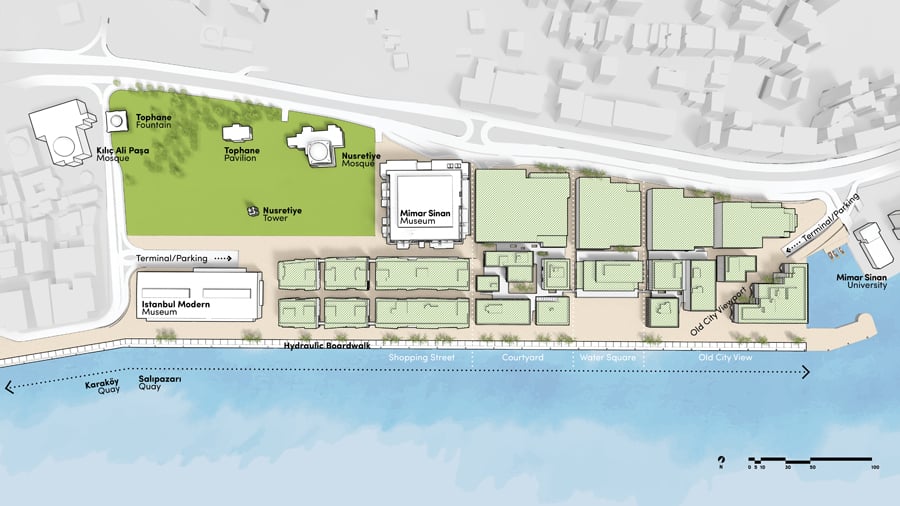
July 5, 2017
How a Hydraulic Boardwalk Is Giving Istanbul Its Waterfront Back
A master plan by Gensler and U.S.-based design firm Dror will reintegrate Istanbul’s waterfront within the ancient city’s urban fabric for the first time in centuries.
For all their vaunted proximity to the seas that have shaped their ancient city, locals feel the absence of nature keenly in Istanbul. The nationwide political protests of 2013 were, after all, sparked by the government’s decision to replace a small park with yet another shopping mall. So a master plan, under construction through 2019, that will restore the public’s access to a historic 0.75-mile area along the European bank of the Bosporus has been welcomed. The competition-winning 2.7-acre plan by U.S.-based design firm Dror and architecture office Gensler will modernize the Karaköy and Salıpazarı Quays around a trove of classical landmarks and contemporary cultural destinations like the Istanbul Modern Art Museum. The crux of the project, however, is the remaking of a cruise terminal that until now welcomed up to 6,000 passengers per ship but blotted out the city’s experience of the sea.
In most cities, cruise ships dock in a remote area, but here, ships decant their passengers into one of the historical hearts of the city. “Imagine that you have to put JFK Airport in the middle of Soho,” Benshetrit says. “It’s like 12 Boeing 747s all landing at the same time.” Dror and Gensler’s plan resolves this unsightly congestion via an industrial design innovation that opens up the waterfront by enclosing the cruise terminal underground, an industry first. This concealment is predicated on the invention of a hydraulic boardwalk and gangway system by Dror and Miami-based interdisciplinary firm BEA. Tucked tidily into retaining wall-reinforced landfill, the boardwalk opens, hatch-like, to welcome docking ships, reducing the gangway’s footprint to a 3.5 m-wide strip that is only occupied when—and where—a ship is docked. Discrete panels in the boardwalk fold upward in segments corresponding to the size and docking location of each ship–a 250 m ship interrupts only 250 m of boardwalk–to form a secure perimeter wall. Meanwhile the gangway rises to meet the ship’s doors and feed passengers into the subterranean customs area.
“The solution was born out of childlike exploration,” Benshetrit explains. “We need to make those massive cruise ships disappear, how do we do that? Could we do a floating deck? Or, how can we bury this underground? If we do that, we have to adjust the stairs to ships with different doors at different heights so, can we make a gangway that moves, like an escalator? Questions led to research led to questions.”
Above ground, the plan frees up a 14.8-acre walking district, where the designers determined the massing and scale of 18 small, “pixellike” buildings (local architects will eventually flesh out their design) that step down in size toward the strait. This intimate neighborhood will boast a series of rooftop terraces and views connected by spacious plazas and planted, elevated paths. “The project is called Galataport, but we wanted to highlight the land and hide the port,” says Benshetrit. “The value is the land itself, so we wanted to give it the respect that it deserves.” Like the city, the project fuses history with the cutting edge, the city with the sea, and it’s about time: Istanbulites have had limited access to this bank of the Bosporus for about 200 years.












